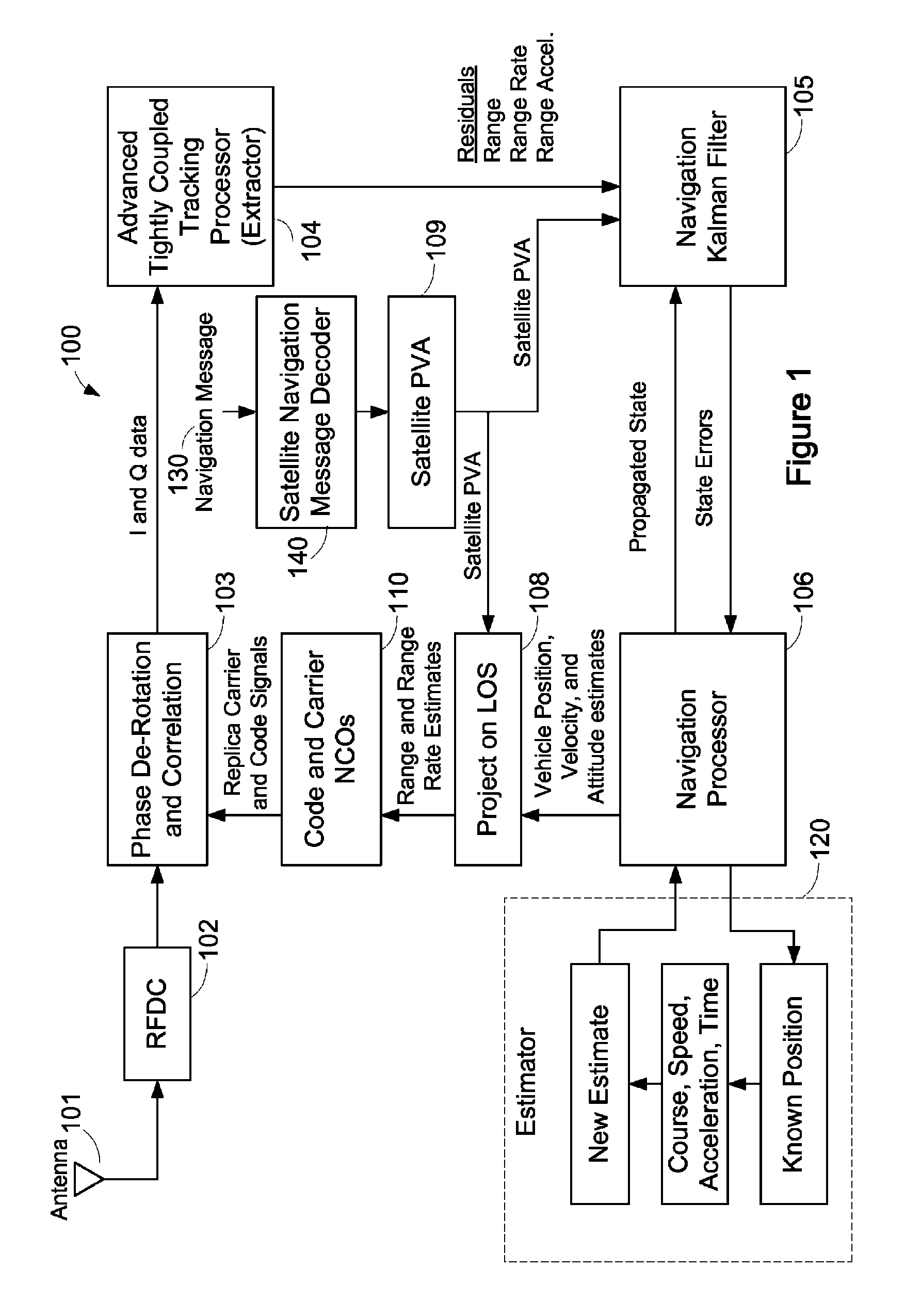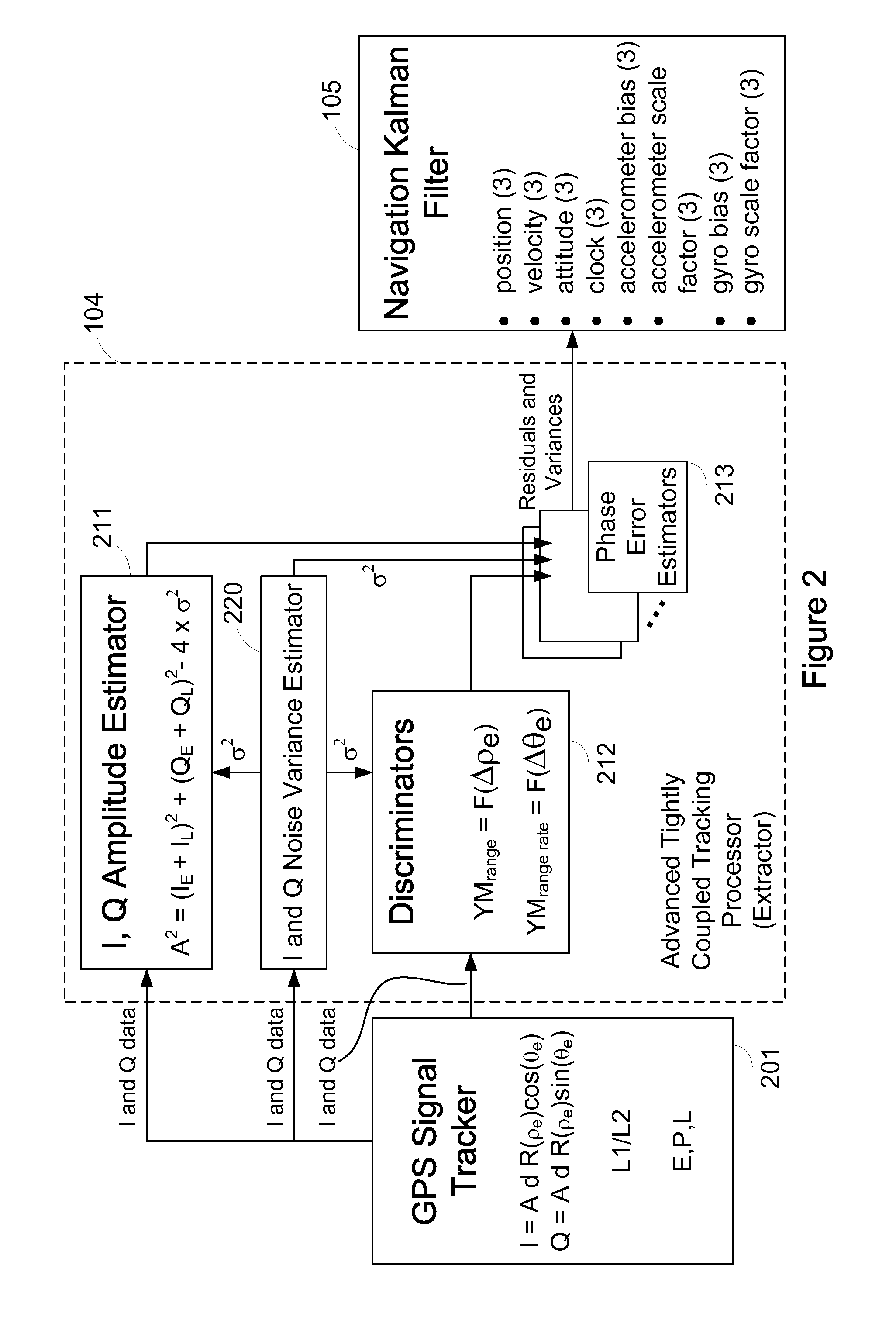Tight coupling of GPS and navigation estimates with reduced or eliminated inertial measurement unit data
a technology of inertial measurement unit and tight coupling, which is applied in the direction of instruments, measurement devices, satellite radio beaconing, etc., can solve the problems of large noise suppression, unsatisfactory power consumption of imu systems, and uncorrelated noise between satellites with equal variance, and achieves the effect of easy integration into existing navigation filter designs
- Summary
- Abstract
- Description
- Claims
- Application Information
AI Technical Summary
Benefits of technology
Problems solved by technology
Method used
Image
Examples
Embodiment Construction
[0036]FIG. 1 is a block diagram showing multi-satellite tracking system 100. In the system 100, satellite navigation signals are received by an antenna 101 and provided to a Radio Frequency Down Converter (RFDC) 102. Downconverted signals from the RFDC 102 are provided to a phase de-rotation and correlation block 103. De-rotated and correlated signals from block 103 are provided to an ATC tracking processor 104. The ATC tracking processor 104 provides residuals of range, range rate and range acceleration to a 24-state navigation Kalman filter 105. Navigation state errors from the Kalman filter 105 are provided to a navigation processor block 106. Navigation estimates are based on dead reckoning in which the receiver position and velocity are propagated based on the current estimate of acceleration, velocity and position. The navigation processor block 106 provides corrected navigation state information to a projection block 108 and propagated state information to the Kalman filter 1...
PUM
 Login to View More
Login to View More Abstract
Description
Claims
Application Information
 Login to View More
Login to View More - R&D
- Intellectual Property
- Life Sciences
- Materials
- Tech Scout
- Unparalleled Data Quality
- Higher Quality Content
- 60% Fewer Hallucinations
Browse by: Latest US Patents, China's latest patents, Technical Efficacy Thesaurus, Application Domain, Technology Topic, Popular Technical Reports.
© 2025 PatSnap. All rights reserved.Legal|Privacy policy|Modern Slavery Act Transparency Statement|Sitemap|About US| Contact US: help@patsnap.com



